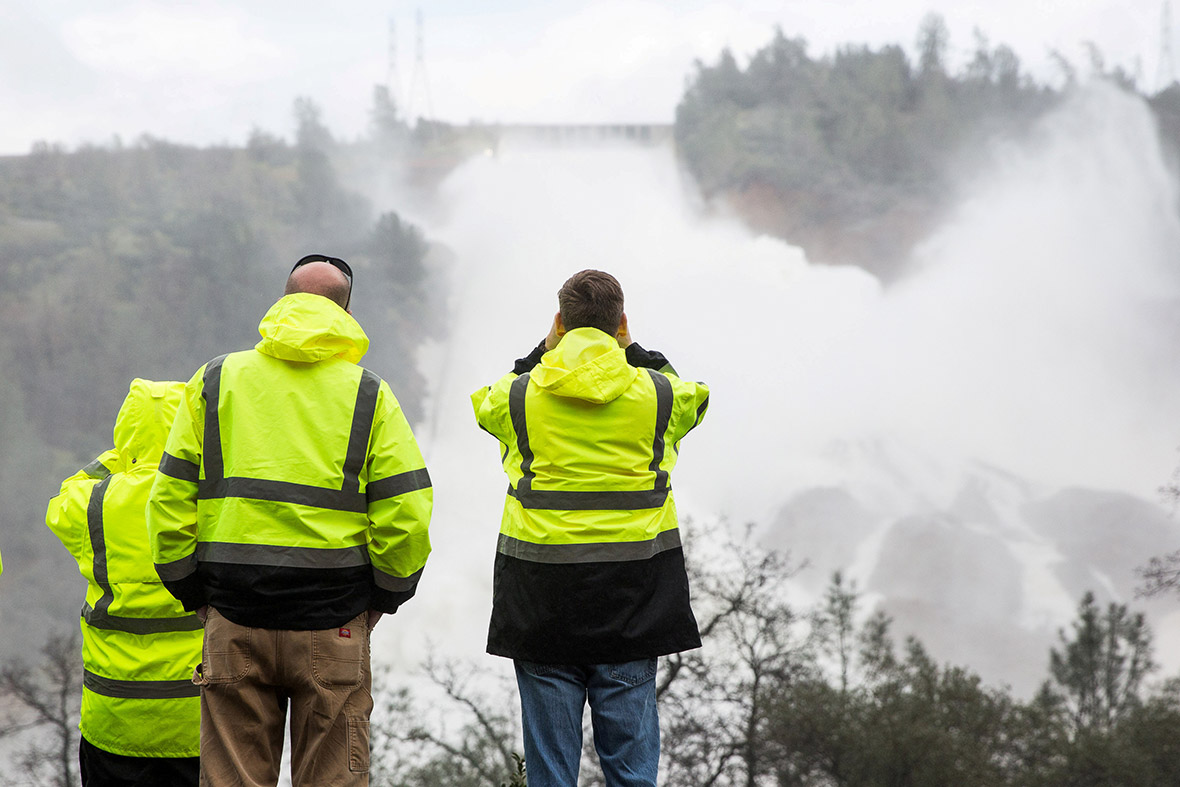Engineers work to repair Oroville Dam spillway ahead of more storms
After what looks set to be the wettest winter in northern California following years of drought, more rain is forecast for this week as evacuees face indefinite stay and environmental groups say authorities were warned a decade ago.
The 180,000 people who were ordered to evacuate their homes downstream of the damaged Oroville Dam face an indefinite stay in shelters as engineers work to repair the structure before more storms sweep the region. After what looks set to be the wettest winter in northern California following years of drought, more rain is forecast this week.





The threat emerged after weeks of storms dumped rain and snow across California, particularly in northern parts of the state. The Department of Water Resources began releasing water down the main spillway last week to make more room in the reservoir behind the 770ft-high Oroville Dam, the largest in the US.
But when a chunk of concrete tore out of the spillway, creating a 200ft-long, 30ft-deep hole, water managers began using the emergency spillway for the first time in its 48-year history. The flow of water was so fierce it ripped through a road and carved out deep chasms in the ground.
Helicopters have been dropping giant rock-filled sandbags into the gap at the top of the emergency spillway to rebuild the eroded hillside. Authorities say they have averted the immediate danger of a catastrophic failure that could unleash a wall of water three storeys high on towns below.

















The acting head of the state's Department of Water Resources said he was unaware of a 2005 report that recommended reinforcing the earthen emergency spillway with concrete to prevent damage. The spillway had never been used in the dam's nearly 50 years of operation, and it was not near capacity when it began to fail.
Environmental groups raised concerns years ago about the stability of the emergency spillway, but state and federal officials dismissed them and insisted the structure was safe, according to records. In 2005, three advocacy groups complained to the Federal Energy Regulatory Commission that using Lake Oroville's earthen spillway would cause significant erosion because it was not armoured with concrete.
They said soil, rocks and debris could be swept into the Feather River, potentially damaging highways, bridges and power plants. The groups warned of a complete failure of the dam itself, threatening lives and property. Nearly three years later, state officials said no "significant concerns" about the emergency spillway's integrity had been raised in any government or independent review.
Governor Jerry Brown has requested federal assistance from the Trump administration, setting aside previous criticism of the president. The state has vowed to resist many of his administration's efforts. But the governor said at a news conference that he's "sure that California and Washington will work in a constructive way. That's my attitude. There will be different points of view, but we're all one America."
Evacuee Kelly Remocal told AP she believed the public officials working on the problem were "downplaying everything so people don't freak out".
"I honestly don't think they're going to be able to do it, fix the problem," she said. "This requires a little more than a Band-Aid. At this point they have no choice but to give it a Band-Aid fix."
© Copyright IBTimes 2025. All rights reserved.




















